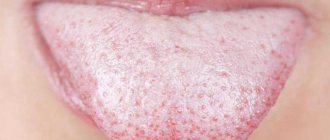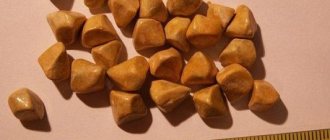A change in the color of stool is the first evidence that there are disorders in the body. This is explained by the fact that any changes in the body begin to affect excretory products. It is especially alarming when the color of a child’s stool changes.
Expert opinion
Kovaleva Elena Anatolyevna
Doctor-Laboratory Assistant. 14 years of experience in clinical diagnostic services.
Ask a question to an expert
When parents see white feces , they immediately panic that this is a sign of hepatitis in the baby. Information material on the Internet may tell you that this is a symptom of cholera. In fact, everything is not so scary and the reasons for the appearance of white feces in a baby can be different.
The main causes of this disease
Until one year of age, regular pediatric examinations are required . It is during the appointment that the doctor is primarily interested in the condition of the stool.
If there are changes in color or consistency, then this is a signal that the child’s body is not working properly.
At an older age, when the child begins to eat on his own, parents should take into account the fact that different foods can ultimately visually change the feces.
For example, eating beets will cause the body's waste products to become reddish in color.
After taking activated carbon, the stool will become black, and after eating fatty cottage cheese, white specks may appear in the stool; the same result will occur after feeding a child semolina porridge.
When the color of stool becomes whitish, gray, or even tinged with green, this indicates problems with the gastrointestinal tract.
Expert opinion
Kovaleva Elena Anatolyevna
Doctor-Laboratory Assistant. 14 years of experience in clinical diagnostic services.
Ask a question to an expert
The healthy color of stool (only brown) is due to the breakdown product of hemoglobin. If a child, regardless of age, has white stool, then it is prohibited to make a diagnosis on your own; urgent diagnostic tests are required by a specialist.
Thus, if a child has any ailment, a timely diagnosis will help eliminate it in the early stages. Discoloration of stool may be a sign of the following diseases:
- Hepatitis C (accompanied by fever, abdominal pain, nausea, dark urine).
- Dysfunction of the gallbladder and problems with the removal of brown pigment (diarrhea, excessive sweating, vomiting are present).
- Pancreatitis (common symptoms include pain in the pancreas, fever and toxic syndrome).
- After taking antibiotics and antifungal drugs (associated symptoms are noted - decreased appetite, pale skin, drowsiness, low body temperature).
Possible causes of color change
It is important to understand that the shade of a person’s discharge directly depends on nutrition.
If we talk about the digestive system of infants, then their stool consists of what the mother eats. A nursing woman should temporarily give up carrots, cabbage, and tomatoes if her stool turns light or yellow. Usually the problem goes away on its own within a couple of days. Natural causes of light yellow stool in a child include the start of complementary feeding. The baby undergoes a restructuring of the digestive system, which is fraught with disturbances in the digestion of food (lumps, color changes). There is no need to worry, provided that the baby does not show increased anxiety.
Why does the child have yellow eyes, is it hepatitis?
Oddly enough, babies can also suffer from adult diseases. One of these is hepatitis . A child becomes infected with this virus while in the mother's womb.
Cases of infection occur even more frequently during childhood vaccinations. The danger of the disease lies in the fact that it begins to manifest itself in the form of whitening of stool only at the end of the incubation period, and at this moment the liver is almost completely affected by the virus.
diagnose the child as often as possible .
Depending on how much of the virus has entered the child’s body, the incubation period can last from 7 to 26 weeks inclusive. The disease proceeds smoothly and at the stage of active development begins to manifest itself in the form of dark urine and white feces, nausea and vomiting, pain in the abdomen, as well as yellowing of the skin.
During diagnosis, an enlargement of the liver and sometimes the spleen is detected. It is extremely rare that hepatitis in children is acute; often the virus has a chronic form.
Hepatitis
Light-colored stool may appear due to hepatitis. But this disease is accompanied by other factors. The child becomes lethargic, loses appetite and begins to feel sick. But the first symptom is darkening of the urine. Then the stool begins to lighten. At first the stool will be light yellow, and then completely turn white. At the same time, it will also acquire a grayish tint.
Children under one year of age rarely develop hepatitis B. Especially if the baby has become a carrier of a viral infection. This type of hepatitis has a latent period. The disease can develop slowly, up to six months. First, the child's urine darkens and the stool becomes lighter. Next, appetite disappears and sleep is disturbed. Then vomiting appears and the temperature rises.
Light-colored stool in a child (2 years old) may be a sign of hepatitis A. In this case, the baby’s skin does not immediately turn yellow. First the urine darkens, then the feces turn white. All other signs of the disease are the same as for viral hepatitis B.
Treatment of hepatitis virus in children
The disease does not have a specific established course of treatment; basically, the body’s defense reaction is able to overcome the infectious agent, but this is if the patient has virus A or B.
In this case, accompanying measures in the form of dietary nutrition and medications prescribed by a doctor are necessary.
Do not forget that intoxication may occur when taking aspirin. There are a small number of drugs that are designed to treat the hepatitis virus, but most are not approved for use in children. Once the diagnosis of hepatitis is confirmed, the child will need to be hospitalized . Subsequently, after a series of tests, the doctor will determine the course of therapy.
Diagnostics - what tests need to be taken?
In order to quickly establish the source that provoked such atypical behavior of the digestive system, it is necessary to conduct a thorough examination of the child by a pediatrician, and then undergo the following types of tests:
- blood from a vein in order to study in detail the biochemical composition of one of the most important fluids of the body, to conduct a series of tests to determine the possible presence of infectious diseases, helminthiasis, and the percentage of cells;
- blood from a finger for clinical research and determination of sugar levels;
- Ultrasound of the pancreas, liver, intestines and gall bladder (carried out to exclude pathologies of these organs of the digestive system);
- palpation of the abdomen, which is performed at the first stages of the examination in order to immediately find out which areas of the abdominal cavity conceal a possible source of inflammation;
- endoscopic examination of the stomach to exclude the presence of possible diseases;
- a bacterial study of the composition of a child’s discolored stool to find out which substances dominate in this biological mass and whether they contain dangerous infectious microorganisms and viruses.
The results of all these diagnostic studies play a key role in the development and formation of further treatment regimens, selection of medications, their dosage and duration of use.
In most cases, diagnostic time lasts from 1 to 3 days. It all depends on what kind of medical equipment the health care facility where the baby is being examined is equipped with.
What does white stool mean in a 2 year old child?
Mostly, the stool may turn white in children over one year of age. The cause of this color may be an infection . At this age, the immune system is not yet able to cope with pathogenic microbes as much as possible and children easily become infected with influenza or rotavirus infections.
Expert opinion
Kovaleva Elena Anatolyevna
Doctor-Laboratory Assistant. 14 years of experience in clinical diagnostic services.
Ask a question to an expert
As a result, the presence of infection in the child’s body will lead to white excretory products. In this case, symptoms of intoxication may occur - vomiting, diarrhea and dizziness.
What determines the color of stool?
The color of stool primarily depends on the amount of bilirubin enzyme contained in the stool.
This substance is produced by the liver. Bilirubin leaves the body in stool or urine. Light-colored feces in a child may indicate improper production of the substance. In this case, a urine test should be done. And if it is dark in color, you will need the help of a pediatrician. Also, the color of stool depends on the foods that were consumed. Babies who are not yet one year old are fed breast milk. Therefore, their stools are light and liquid. The more milk, the whiter it is. Over time, the child's diet begins to change, so the feces will gradually harden and darken.
You also need to know that the bowel movements of a baby whose diet is based on formula will be denser than normal. And the color can vary from yellow to gray. The same thing happens when introducing new foods into the diet. When a child turns one year old, he can already consume beets in small quantities. In this case, the stool will immediately take on a darker shade.
Light-colored feces in infants and older children are not always a sign of a pathological process. In many ways, the color of stool is influenced by what foods the baby is fed, or what the mother ate if the baby is breastfed. They acquire a white color when consuming rice, semolina, milk and other dairy products, eating protein in large quantities, or adapted infant formula.
Normally, feces in children are yellow, greenish, or brown. The presence of white lumps in a baby's stool is allowed - this is a sign that the baby is overeating and the milk is not completely absorbed in the body.
Foods that affect stool color
The normal color of the stool is brown in varying degrees of intensity.
But when a child has light-colored stool, what does it mean? For infants, other colors of feces are not at all an indicator of a painful condition. Often the reason is due to the characteristics of the food that the child or nursing mother ate before. The color and consistency of stool are influenced by the following types of factors:
- Changing the type of mixture.
- Increased bilirubin levels.
- Medicines taken by a nursing mother and baby.
4. Introduction of new complementary foods.
- Teething.
- Dysbacteriosis, other types of diseases.
- Features of food products, presence of dyes.
The basis for lightening stool is not only the development of pathological processes in the body. In newborns, even the stool itself can take on various shades from black (meconium (green)) to yellow (reddish color without blood).
There are cases when it is the foods eaten the day before by the child himself, or by the nursing mother, that will cause a change in the color and consistency of the baby's stool.
The main list of foods that cause the body to react by staining feces:
- Dishes made from asparagus, lettuce, and sorrel will give a greenish color.
- Black currants, eggplant, cherries, blueberries - black.
- After drinking a lot of milk - golden yellow.
- Food of plant origin - light brown.
- Meat, sausages - dark brown.
- Beets, tomatoes, dishes containing them - red.
- Fat sour cream, cottage cheese, fresh vegetables will be reflected in the form of a white-gray plasticine-like consistency.
- Pumpkin, carrots - light yellow, yellowish.
- Potatoes, tapioca, rice - light, white, gray, ashy shades.
Taking medications due to the sensitivity of the child's body will definitely cause the body to react to them. Discoloration is caused by drugs aimed at reducing temperature, inflammation, and are antibacterial in nature.
It is possible to draw conclusions that the child is sick or not only after receiving urine tests. Only after passing all the tests, consultation on their results, and examination by a specialist can you obtain a doctor’s opinion.
Situations when you need to go to the doctor
There are cases when you cannot wait, namely with the following symptoms:
- Abdominal pain;
- Bloating;
- The appearance of dark colored urine;
- Frequent bowel movements;
- Nausea with vomiting;
- Feces with an abundance of foam, mucus;
- The child's body and eyes turned yellow;
- Intense thirst;
- Temperature rise;
- No appetite;
- No weight gain;
- Rapid onset of fatigue;
- Sleep is disturbed;
- Poor general health.
Important: If you have at least one of the listed symptoms, you must immediately consult a doctor. In cases where light-colored feces may be a manifestation of liver disease, gall bladder, hepatitis, or other serious diseases, delay can lead to irreversible consequences. At the initial stage, the disease is easier to cure and there is less loss of health.
It is a good idea to seek help from professionals even if the child feels well, but the color of his stool remains white.











